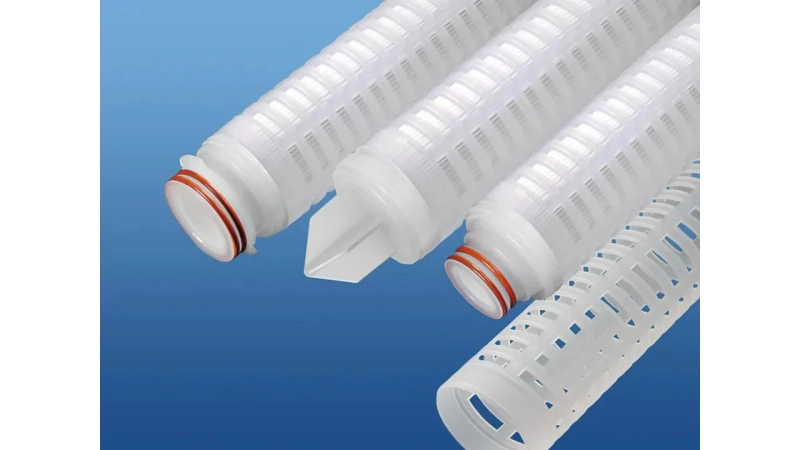In the world of winemaking, clarity and microbial stability are key to delivering a high-quality, shelf-stable product that maintains its flavor and character from the bottling line to the consumer’s glass. Traditionally, wine filtration has leaned on 0.45-micron filters as the standard for final microbial control. However, in many modern wine production settings, especially with natural, unpasteurized, or low-sulfite wines, this standard may no longer be enough.
Emerging microbial challenges, varied wine compositions, and growing consumer demand for cleaner labels have all made it essential to rethink what’s needed at the final filtration stage. Today’s wineries must look beyond just particle size and understand how effective Wine Filtration Systems can be optimized for deeper microbial removal, validated performance, and long-term stability.
The Standard: 0.45 Micron Filters in Wine Filtration
Historically, a 0.45-micron membrane filter has been the go-to solution for removing yeast and most bacteria before bottling. It’s considered the industry’s baseline for microbial control, especially for removing Saccharomyces cerevisiae and Lactobacillus species, which are common fermentation organisms.
These filters also help eliminate unwanted turbidity and reduce the risk of re-fermentation in bottled wine. For many wines, particularly those that are pasteurized, sulfite-stabilized, or consumed shortly after bottling, 0.45-micron membranes continue to offer solid protection.
When 0.45 Micron Isn’t Enough
However, not all wines, and not all wineries, follow the same path. In today’s winemaking landscape, 0.45-micron filtration doesn’t always deliver the level of safety or clarity needed. Here’s why:
1. Spoilage Organisms Can Be Smaller
Certain spoilage bacteria, such as Brettanomyces bruxellensis or Pediococcus damnosus, can be pleomorphic—changing shape or size to slip through standard filters. Some can even exist in fragmented or cell-wall-deficient forms (L-forms) smaller than 0.45 microns.
2. Filter Pore Size ≠ Guaranteed Sterility
Not all filters labeled "0.45 micron" perform the same. Without validation, there's no guarantee that the filter effectively retains harmful microorganisms under real-world conditions, especially with variations in wine pH, viscosity, or alcohol content.
3. Low-Sulfite & Natural Wines Need More Support
Wines with minimal or no added sulfites rely heavily on physical filtration for microbial stability. Without the chemical backup of sulfur dioxide, a more reliable and validated filtration step, often using a 0.2-micron or sterilizing-grade filter, is necessary.
Understanding Filter Validation: ASTM F838 and LRV
This is where validated Wine Filtration Systems become essential. Filters that meet ASTM F838 standards for microbial retention are tested using a worst-case challenge: 10⁷ CFU/cm² of Brevundimonas diminuta, one of the smallest known bacteria (~0.3 μm). Filters that consistently retain this organism qualify as “sterilizing-grade.”
The key metric used here is Log Reduction Value (LRV). A filter with an LRV of 7 has removed 99.99999% of challenge organisms. For wine production, especially for longer shelf life and lower sulfite levels, a sterilizing-grade filter with a validated LRV is the gold standard.
By comparison, many 0.45-micron filters may not have this validation and thus may underperform in microbial removal, especially when faced with real-world wine conditions.
Depth Prefiltration: The Unsung Hero
Upgrading to a 0.2-micron or sterilizing-grade filter doesn’t mean you can ignore upstream filtration. In fact, depth filters, often made of cellulose, glass fiber, or polypropylene, play a critical role in protecting the final membrane.
Using depth filter cartridges as prefilters helps:
- Reduce turbidity and particulate load
- Extend the lifespan of final membrane filters
- Prevent clogging and pressure drop
- Preserve flavor and aroma compounds through gentle filtration
The combination of depth and membrane filtration, each tailored to the wine’s microbial and particulate load, offers a balanced system that maximizes protection without compromising product quality.
Go Beyond the Micron Label!
Final filtration is the last defense between your wine and the bottle, and ultimately, the customer. In today’s evolving market, relying solely on a 0.45-micron filter may not be enough. For winemakers focused on shelf life, flavor protection, and microbial safety, especially in natural, low-sulfite, or high-risk wines, it’s time to embrace validated, scalable Wine Filtration Systems that go beyond standard solutions.
Separation Technologies, Inc. offers advanced wine filtration solutions and system designs, including depth and membrane filtration options that are validated for microbial control and designed to protect flavor, quality, and consumer trust. Explore more at Separation Technologies, Inc.


